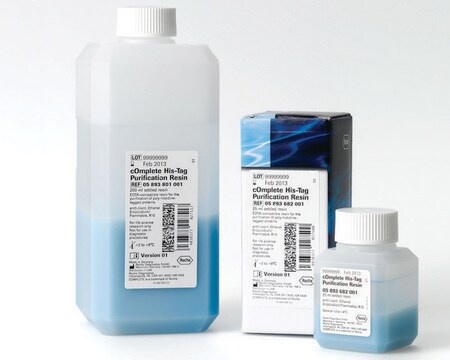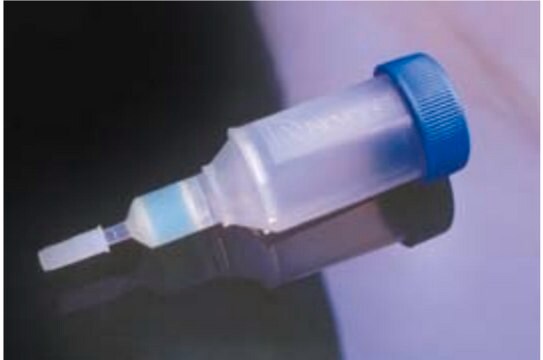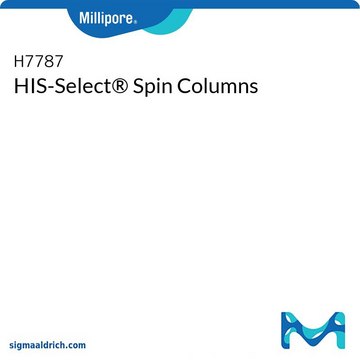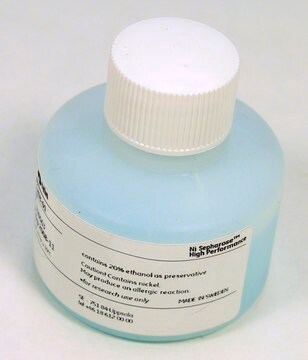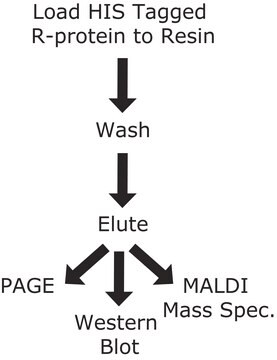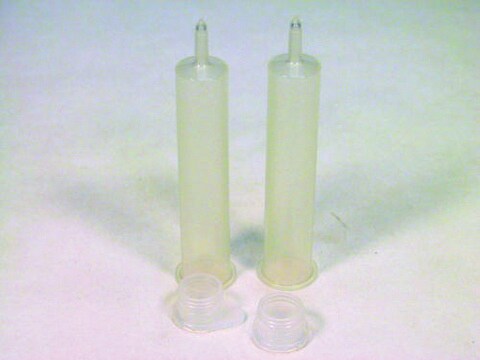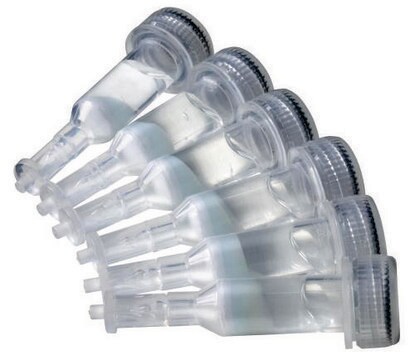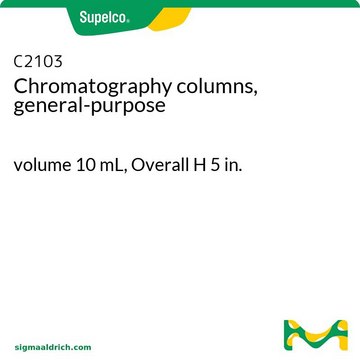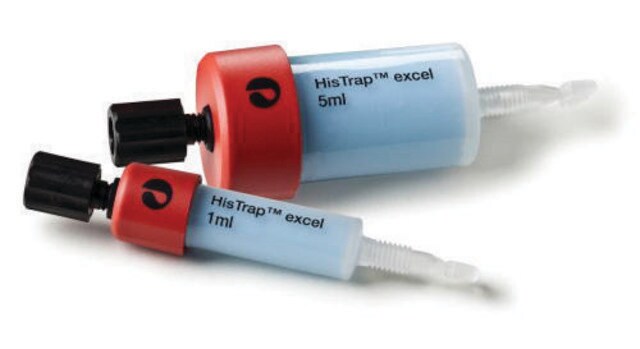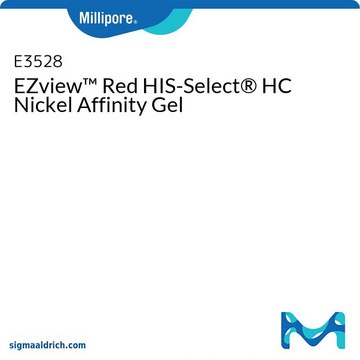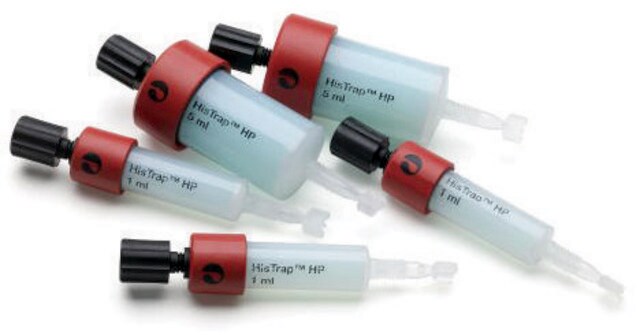COHISC-RO
Roche
cOmplete™ His-Tag Purification Column
Prepacked, ready-to-use chromatography column
About This Item
Productos recomendados
envase
pkg of 5 x 1 mL (columns (06781543001))
pkg of 5 mL (column (06781535001))
fabricante / nombre comercial
Roche
Parámetros
1,420 cm/hr max. flow rate
capacidad
≥40 mg/mL, resin binding capacity
temp. de almacenamiento
2-8°C
Descripción general
Características y beneficios
cOmplete His-Tag Purification Columns are fully compatible with standard purification systems such as ÄKTA Systems (Cytiva).
- Use the buffer conditions best suited to your protein
- Repeatedly obtain highly pure protein
- Protect your protein from toxic nickel
- Work in a safe and eco-friendly environment
Envase
- 06781535001 (5 mL column; 1 column containing 5 ml of cOmplete His-Tag Purification Resin)
- 06781543001 (5 x 1 mL columns; 5 columns containing 1 ml of cOmplete His-Tag Purification Resin)
Compatibilidad
Compatibility during chromatography: The resin is compatible with 10mM EDTA, 10mM DTT during the purification (1 hour incubation), 6M guanidinium-HCl, 8M urea, pH 2.0 to pH 14.0.
Compatibility during cleaning: 4% SDS Form cOmplete His-Tag Purification Resin filled in columns, pre-charged with Ni2+ stored in 20% ethanol.
Otras notas
1 ml column (06 781 543 001): 0.5 to 2.0 ml/minute
The volumetric flow rate is a function of the column′s cross section.
Recommended imidazole concentration for load/wash: Nonspecific binding of proteins without a His-tag is low.
Use up to 5 mM imidazole in load and/or wash buffers.
If establishing a new assay for purification of His-tag proteins with cOmplete His-Tag Purification Columns do not use imidazole. If, e.g., the purity of the His-tag protein needs to be improved following this first step, use imidazole in a final concentration of up to 5mM in a second step.
Recommended imidazole concentration for elution: Up to 500mM
Please note:
In contrast to other available resins, bound His-tagged protein typically elutes from cOmplete His-Tag Purification Columns with a lower imidazole concentration, e.g., 25 to 45mM.
Binding capacity
The binding capacity of the resin to various types of proteins may vary according to the protein characteristics such as the size of the protein.
cOmplete His-Tag Purification Columns bind with a high specificity to the polyhistidine-tagged protein. As a consequence, the binding kinetics may appear to be different when compared to conventional metal chelate matrices. Full capacity of cOmplete His-Tag Purification Columns can be achieved by allowing more time for the protein to bind to the resin by lowering the flow rate during the chromatography purification procedure.
Información legal
Palabra de señalización
Warning
Frases de peligro
Consejos de prudencia
Clasificaciones de peligro
Carc. 2 - Eye Irrit. 2 - Flam. Liq. 3 - Skin Sens. 1
Código de clase de almacenamiento
3 - Flammable liquids
Clase de riesgo para el agua (WGK)
WGK 1
Punto de inflamabilidad (°F)
93.2 °F
Punto de inflamabilidad (°C)
34 °C
Certificados de análisis (COA)
Busque Certificados de análisis (COA) introduciendo el número de lote del producto. Los números de lote se encuentran en la etiqueta del producto después de las palabras «Lot» o «Batch»
¿Ya tiene este producto?
Encuentre la documentación para los productos que ha comprado recientemente en la Biblioteca de documentos.
Los clientes también vieron
Artículos
Get maximum protection after protein isolation by using protease and phosphatase inhibitor cocktail tablets from Roche.
Protocolos
cOmplete™ His-Tag Purification Column Protocol & Troubleshooting
Nuestro equipo de científicos tiene experiencia en todas las áreas de investigación: Ciencias de la vida, Ciencia de los materiales, Síntesis química, Cromatografía, Analítica y muchas otras.
Póngase en contacto con el Servicio técnico